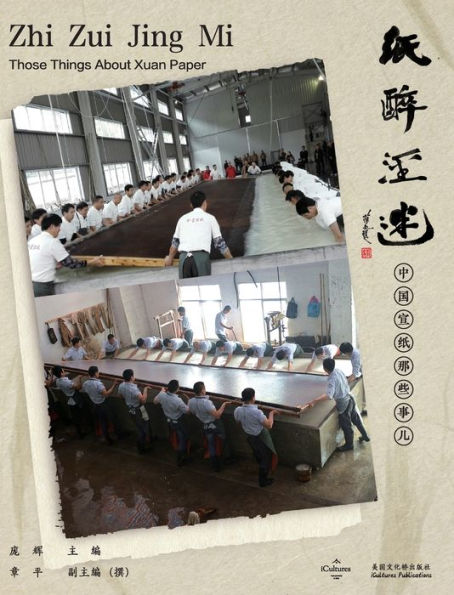Chinese Xuan Paper, a Thousand-year Legend
In 2006, the State Council of the People's Republic of China issued the first batch of National Intangible Cultural Heritage lists. Among them, the "Xuan paper making skills" of Jingxian, Anhui Province was listed, making this traditional handmade craft officially recognized as a national protected object. On September 30, 2009, this "Xuan paper making skills" of China was affirmed by UNESCO and included in the List of Intangible Cultural Heritage of Humanity.
Having been a popular paper used for classical Chinese paintings and calligraphy, Xuan paper is one of the traditional Chinese papermaking crafts. Because Xuan paper is
easy to store, durable and long lasting, it earns the reputation of "paper longevity for thousands of years". The texture of Xuan paper is soft but tough, smooth and clean like jade, and rot and insect resistant. Used for paintings and calligraphy, the layers and strokes on Xuan paper are clear and distinct, bold and vigorous, saturated but not muddy, light but not lackluster. Words and paintings are brilliant and vivid on paper.
According to the " History of the Early Tang Dynasty", paper and writing brushes already appeared in the tribute presented by Xuancheng County to Chang'an during the reign of Tang Tianbao. The comprehensive and systematic use of green sandalwood bark to make Xuan paper began from the Cao family, represented by Cao Dasan, the ancestor of Xiaoling in Jingxian, in late Song Dynasty and early Yuan Dynasty.
Why can Xuan paper only come from Jingxian? How many magical legends are there in that place? Such, is our original intention to go into the introduction of "the mountain, the water, the people" with all those legends; and such, is our purpose to pass on the well documented history and legend to future generations so that they reveal the truth through these historical facts.
Chinese Xuan Paper, a Thousand-year Legend
In 2006, the State Council of the People's Republic of China issued the first batch of National Intangible Cultural Heritage lists. Among them, the "Xuan paper making skills" of Jingxian, Anhui Province was listed, making this traditional handmade craft officially recognized as a national protected object. On September 30, 2009, this "Xuan paper making skills" of China was affirmed by UNESCO and included in the List of Intangible Cultural Heritage of Humanity.
Having been a popular paper used for classical Chinese paintings and calligraphy, Xuan paper is one of the traditional Chinese papermaking crafts. Because Xuan paper is
easy to store, durable and long lasting, it earns the reputation of "paper longevity for thousands of years". The texture of Xuan paper is soft but tough, smooth and clean like jade, and rot and insect resistant. Used for paintings and calligraphy, the layers and strokes on Xuan paper are clear and distinct, bold and vigorous, saturated but not muddy, light but not lackluster. Words and paintings are brilliant and vivid on paper.
According to the " History of the Early Tang Dynasty", paper and writing brushes already appeared in the tribute presented by Xuancheng County to Chang'an during the reign of Tang Tianbao. The comprehensive and systematic use of green sandalwood bark to make Xuan paper began from the Cao family, represented by Cao Dasan, the ancestor of Xiaoling in Jingxian, in late Song Dynasty and early Yuan Dynasty.
Why can Xuan paper only come from Jingxian? How many magical legends are there in that place? Such, is our original intention to go into the introduction of "the mountain, the water, the people" with all those legends; and such, is our purpose to pass on the well documented history and legend to future generations so that they reveal the truth through these historical facts.

纸醉泾迷zhi Zui Jing Mi: 中国宣纸那些事儿Those Things About Xuan Paper
104
纸醉泾迷zhi Zui Jing Mi: 中国宣纸那些事儿Those Things About Xuan Paper
104Hardcover(Hui Pang ed.)

Product Details
| ISBN-13: | 9781087926407 |
|---|---|
| Publisher: | Eastwest Art Culture & Education Center |
| Publication date: | 12/06/2020 |
| Series: | Chinese Intangible Cultural |
| Edition description: | Hui Pang ed. |
| Pages: | 104 |
| Product dimensions: | 8.00(w) x 10.00(h) x 0.44(d) |
| Language: | Chinese |
